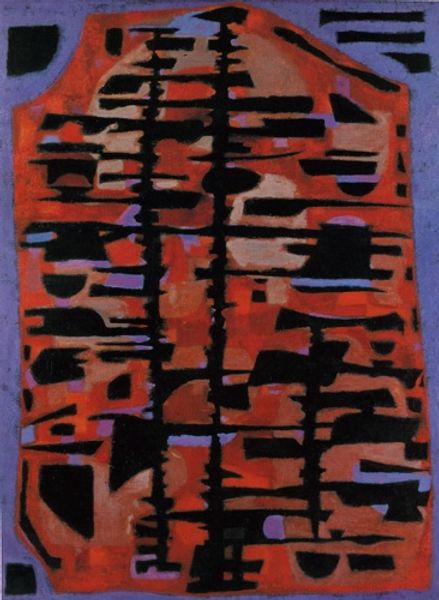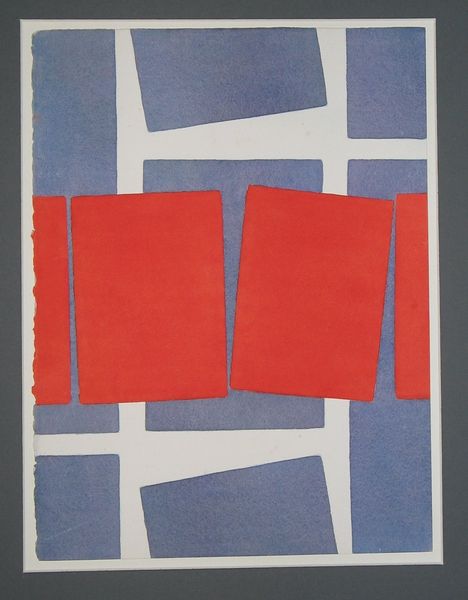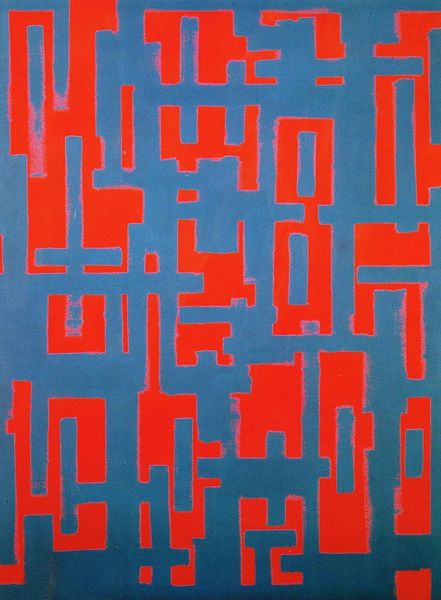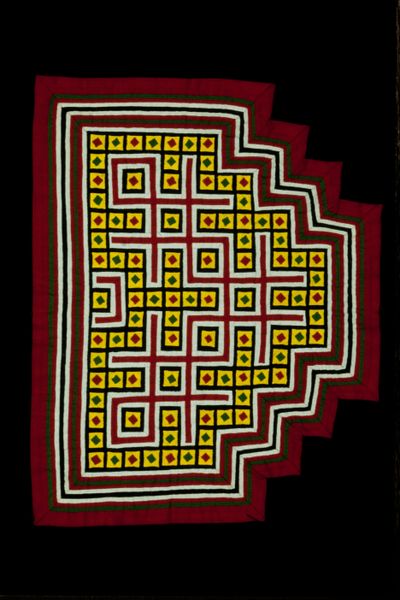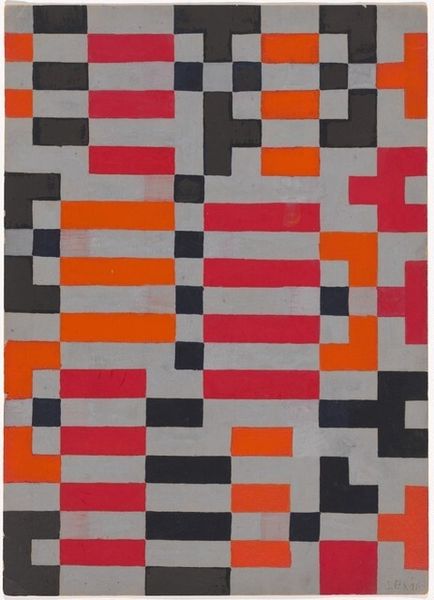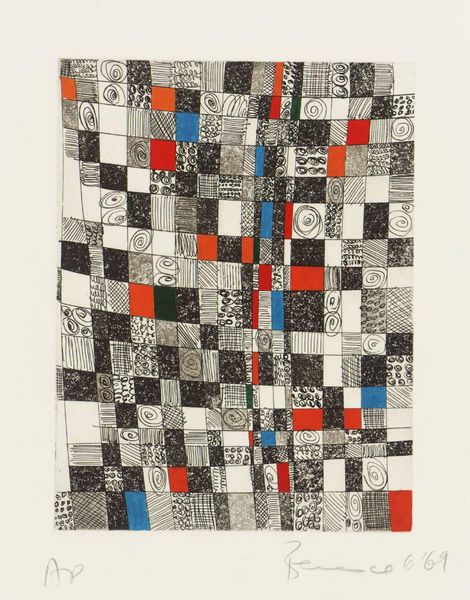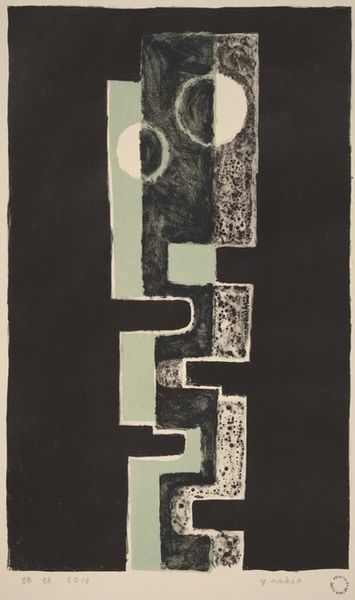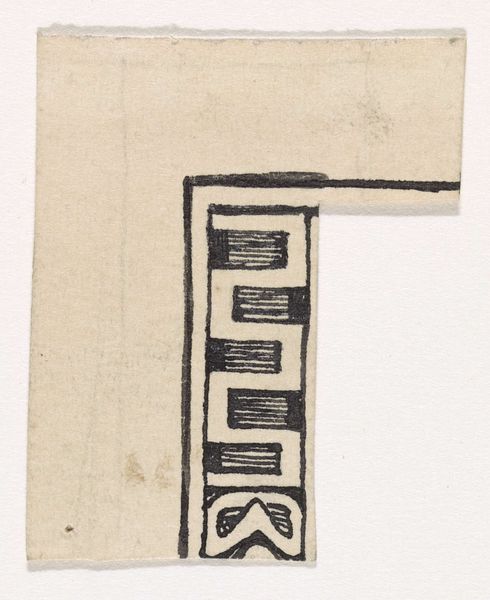
mixed-media, painting, textile
abstract-expressionism
mixed-media
painting
textile
form
text
geometric
abstraction
line
hard-edge-painting
Copyright: Adolf Fleischmann,Fair Use
Editor: So, this "Untitled" piece is a mixed-media work from 1963 by Adolf Fleischmann. The contrasting geometric shapes and color palette strike me as quite bold and graphic for the period. What’s your take? Curator: This is interesting. Consider the context of 1963. Abstract Expressionism was in full swing, with a focus on gesture and emotion. This work, however, leans toward Hard-edge painting, a movement that favored clean lines and flat, vibrant colors. Given the social backdrop of Cold War anxieties and burgeoning technological advancements, the emphasis on order and precision might be interpreted as a visual manifestation of a desire for control in a rapidly changing world. The title's absence is conspicuous. Is that a rejection of a fixed interpretation? Editor: That’s fascinating! I hadn’t considered the political context so directly. But doesn’t abstraction, by definition, evade direct representation? Why label it “political?” Curator: Because abstraction, especially non-figurative work, engages socio-political ideology. Look at the lines; the shapes resemble building blocks, or perhaps circuitry, echoing the booming industrial and technological advances during this era. How might this play into the perception, consumption, and potential political function of such artworks in that period? Editor: Okay, I get it now. It is like these forms and colors act as cultural signifiers or timestamps of that historical period. And that museums validate these cultural objects and provide contexts for interpretations. Curator: Exactly. It all prompts consideration about which images become sanctioned and circulate within the artworld, and how historical and social forces play their part. Editor: This has made me see so many additional layers that weren't apparent to me initially! It shows me how much I need to know still! Curator: Yes, by studying those contexts, we become much more visually literate viewers of the art of the past!
Comments
No comments
Be the first to comment and join the conversation on the ultimate creative platform.
